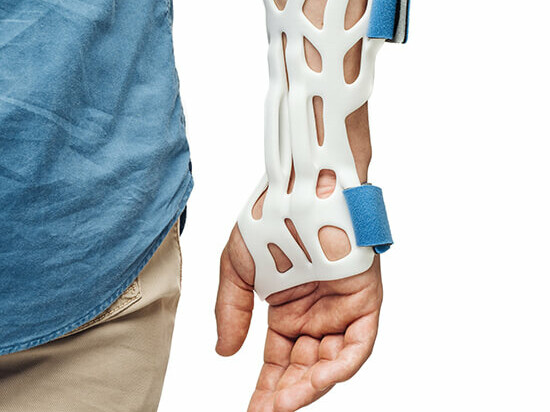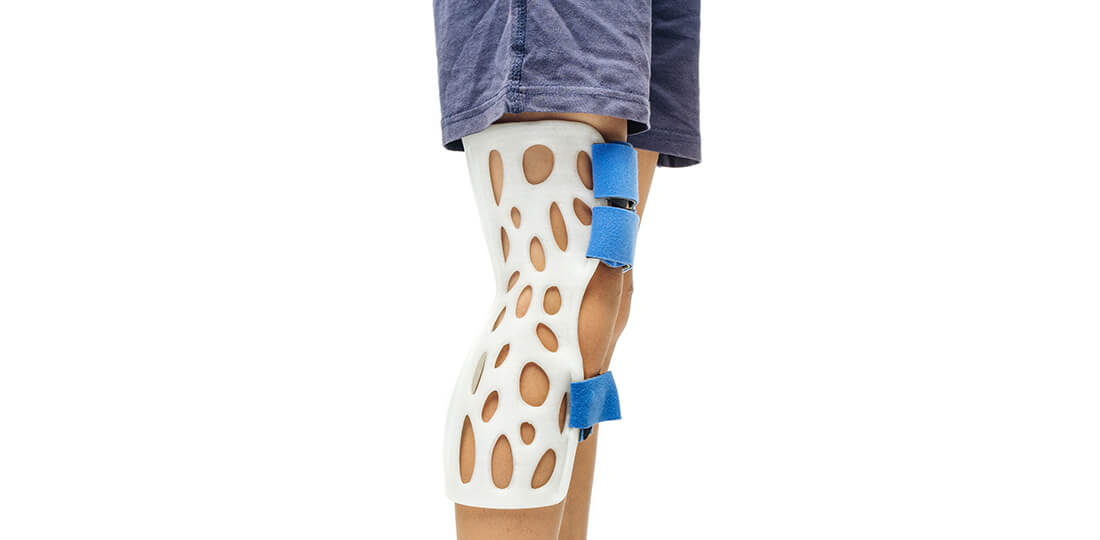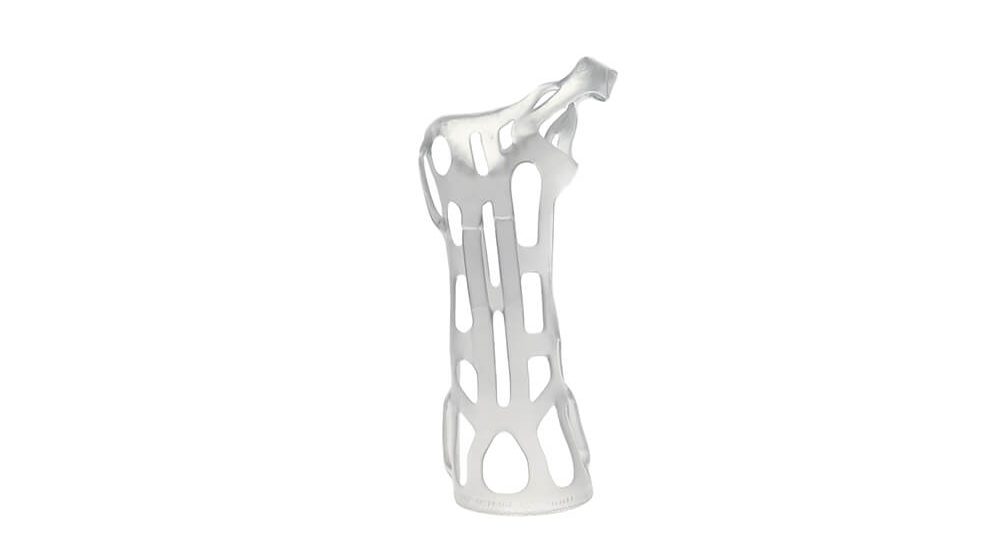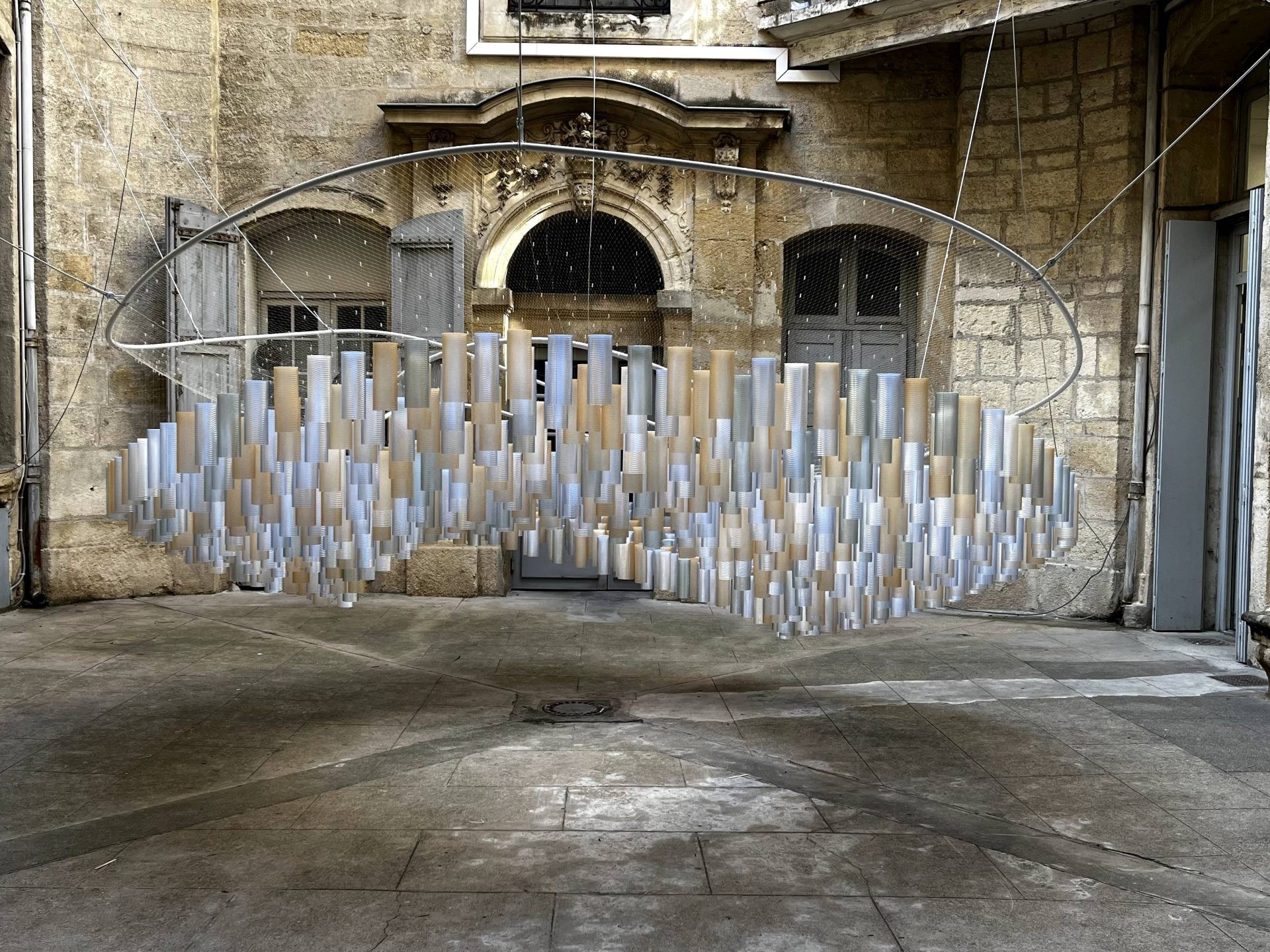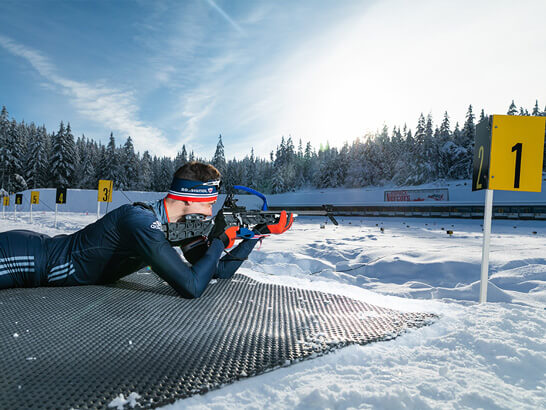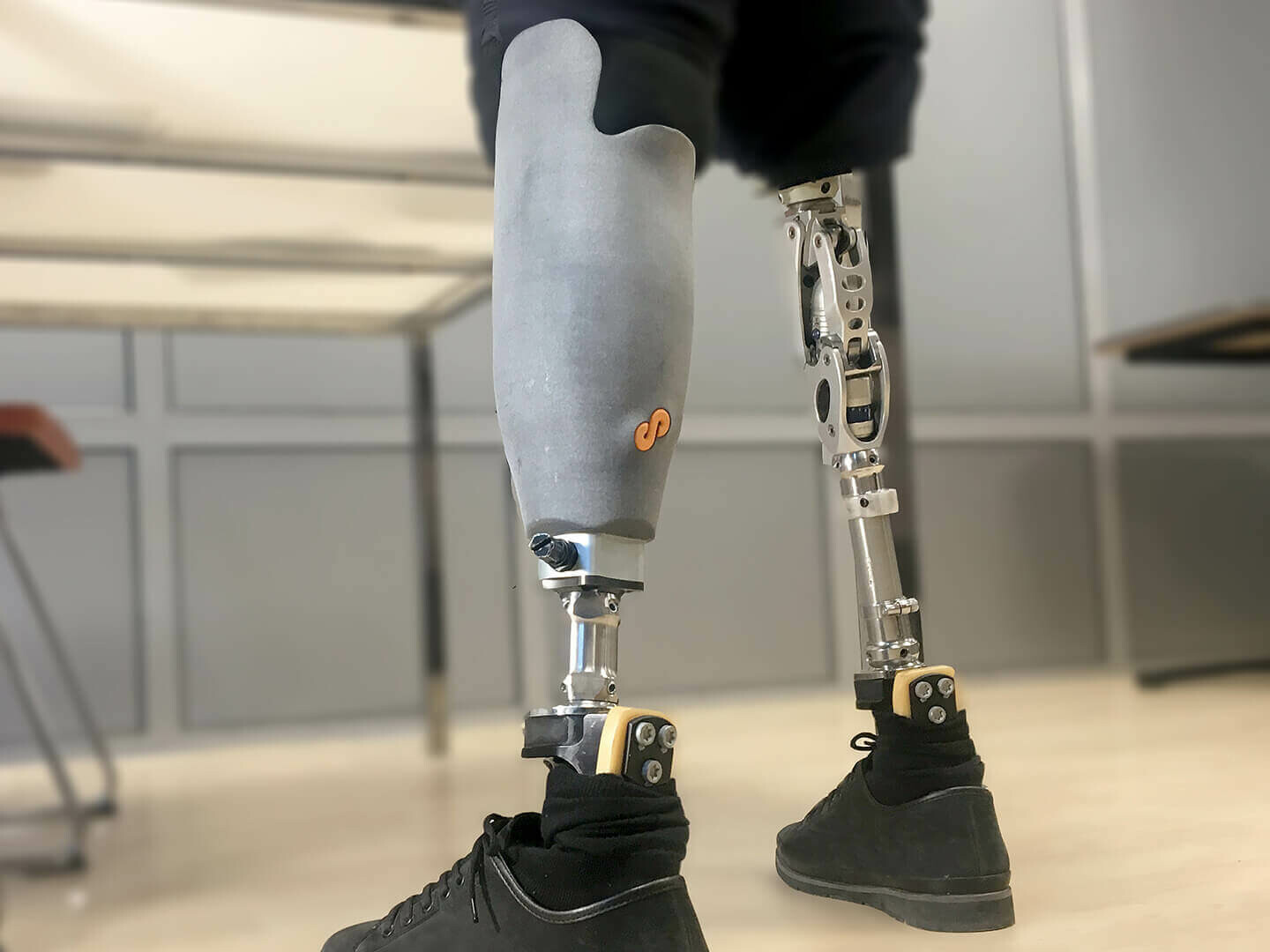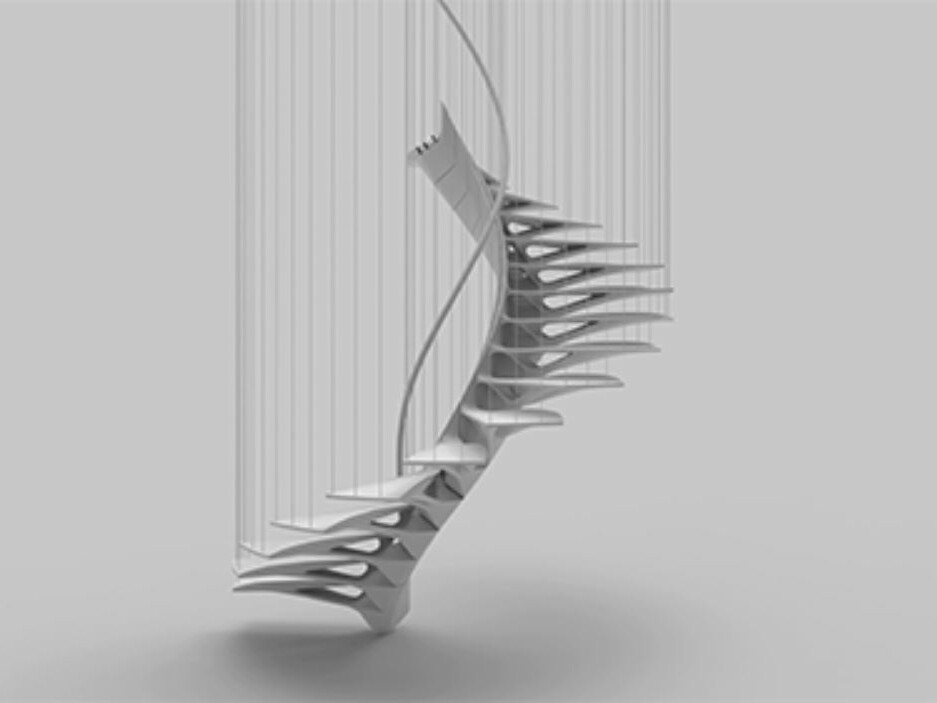Orthoses
Next-level Orthoses by Spentys and Forward AM
With the world population aging rapidly, orthopedic disorders are certain to rise. In consequence, the market for custom-made orthoses will continue to expand.
Project Breakdown
Industry
Medical
Product
Orthoses
Why Forward AM?
Largest portfolio of high-performance AM materials offers the right material for different kinds of orthoses
Forward AM materials used
Ultrafuse® PP, Ultrafuse® TPU64D, Ultrafuse® PET CF15, Ultrafuse® PLA, Ultracur3D® ST45
The result
3D printed orthoses enabling healthcare providers to create high-quality, patient-specific orthoses faster and with increased comfort for patients
Challenge: Meeting patients’ demand for modern immobilization devices
Modern digital technologies such as Additive Manufacturing are set to change the traditional orthopedic industry radically in the near future, as the sector grapples with increasing costs for orthopedic specialists and the higher demands of patients regarding comfort, aesthetics, and quality of life.
When it comes to comfort, anyone who ever had a broken arm knows the struggle: Traditional immobilization devices like plaster casts are very uncomfortable, even taking a shower becomes awkward and tiresome, and repeated appointments with the specialist are needed to examine and rearrange them. In short, producing, adapting and fitting traditional immobilization devices take time and is tough on patients’ nerves, not to mention the waste produced in the process. For chronic malpositioning sufferers this is even worse, as they have to put up with constant pressure from painful corrective immobilizers. Healthcare providers are also acutely aware of the situation – for them, the traditional orthotic process takes up precious time they would prefer to spend caring for their patients.
Solution: 3D printing customized immobilization devices onsite
Additive Manufacturing opens up new possibilities for orthopedic professionals around the globe. So far, however, integrating AM in their daily work has been a complex undertaking. Now an innovative technology developed by Belgian medtech company Spentys using high-performance materials by Forward AM represents a solution that is already delivering superb real-world results and taking immobilization devices to the next level.
Focusing on two main points of care, Emergency Rooms and orthopedic technicians, Spentys is enabling healthcare providers to act faster and provide their patients with a much more comfortable, customized solution. For orthopedic surgeons it is predominantly speed that counts – Emergency Room staff need to treat their patients immediately. By 3D printing customized orthoses, they are now able to provide far more comfortable medical devices much faster and more efficiently.
The Spentys platform enables orthopedic technicians, who mainly care for patients with chronic disorders, to integrate 3D scanning, 3D modelling as well as 3D printing into their workflows. Their patients require more durable devices than people with broken arms or legs in the Emergency Department – these orthopedic specialists need orthoses made of a different material that fulfils the specific requirements of their chronic sufferers.
“We were able to implement the 3D technology swiftly in our existing production processes and instruments. It has already proven to be of enormous added value for our patients and our internal procedures”.
Luc Coenen, Director at Orthopedie Van Haesendonck.
What’s more, each kind of orthosis calls for a different material: Some have to perform in a very flexible way and others need to provide more support, requiring a stiffer material. Offering one of the largest portfolios in the Additive Manufacturing industry, Forward AM was the first-choice partner for Spentys. From Forward AM’s comprehensive range of materials comprising polymer powders, photopolymers and advanced filaments, the partners identified an outstanding set of materials for 3D printing new-generation orthoses for the full spectrum of applications.
For prosthetic covers, the strong Ultrafuse® PET is the perfect fit, while the filament Ultrafuse® PET CF 15 is ideal for protective helmets and masks, leveraging its carbon reinforcement. The easy to print highly flexible filament Ultrafuse® TPU 64D makes small orthotic devices possible and Ultrafuse® PP is the stand-out choice for lower-extremity orthoses, providing great stress and fracture resistance combined with excellent formability and durability – vital for orthotists and manufacturers of customized medical devices.
Remembering the importance of speed for hospitals, Spentys here makes use of the photopolymer Ultracur3D® ST45, since its respective 3D print technology DLP is characterized by quick printing – that’s what counts most in the Emergency Department. Ultracur3D ST45 is perfectly suited for this application thanks to its amazing printing speed and its biocompatibility.
Also for recent surgery patients, 3D printed devices such as facemasks enable them to get on with their lives without restrictions. Right after a nose fracture, pro field hockey player Fay Keijer playing for KMTHC in the Belgian Premier League wore a facemask printed with Ultrafuse® PET CF 15 that allowed her to get back on the field during her recovery.
“Thanks to the fully individualized 3D printed solution the mask fit me perfectly and allowed me to continue to be fearless on the field!“
Fay Keijer, Belgian Premier League field hockey player at KMTHC.
Spentys found a trusted and reliable partner in Forward AM, whose broad portfolio offers advanced Additive Manufacturing materials for all classes of orthoses. The partners’ new solution enables orthopedic professionals to offer fully customized immobilization devices to patients while increasing the efficiency of their production process, by leveraging the benefits of Additive Manufacturing. The 3D printed orthoses are tailored to each patient, much lighter and more breathable than traditional devices. Thanks to their flexibility, they are easy to remove and replace to monitor the healing process and make adjustments if required, without having to start over with a new device, thus saving valuable time, costly material, and unnecessary waste.
For more information about Spentys, visit: Reinventing Orthopedics | Spentys.
Share this page
Next Steps
Reference Links and Documents
Get in touch
Do you have questions about our materials, technologies or services? Get in touch now!
